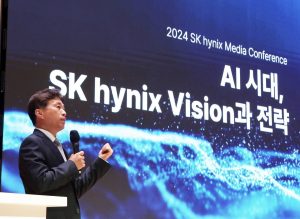Popular Keywords
- About Us
-
Research Report
Research Directory
Semiconductors
LED
Consumer Electronics
Emerging Technologies
- Selected Topics
- Membership
- Price Trends
- Press Center
- News
- Events
- Contact Us
HBM3e
News

[News] Reasons for Samsung’s HBM Chips Failing Nvidia Tests Revealed, Reportedly Due to Heat and Power Consumption Issues
Samsung's latest high bandwidth memory (HBM) chips have reportedly failed Nvidia's tests, while the reasons were revealed for the first time. According to the latest report by Reuters, the failure was said to be due to issues with heat and power consumption. Citing sources familiar with the matte...
News

[News] SK Hynix Revealed Progress for HBM3e, Achieving Nearly 80% Yield
SK hynix has disclosed yield details regarding the company’s 5th generation High Bandwidth Memory (HBM), HBM3e, for the first time. According to a report from the Financial Times, citing Kwon Jae-soon, the head of yield at SK hynix, the memory giant has successfully reduced the time needed for mas...
News

[News] CoWoS Production Capacity Reportedly Falls Short of GPU Demand
The world's four major CSPs (Cloud Service Providers) – Microsoft, Google, Amazon, and META – are continuously expanding their AI infrastructure, with their combined capital expenditures projected to reach USD 170 billion this year. According to the industry sources cited in a report from Commer...
News

[News] SK Hynix Reportedly Raises Prices Again, with DRAM Products to Increase by 15-20%
The surge in memory product prices continues, driven by the AI wave revitalizing the memory market. According to a report from Liberty Times Net, prices of high-performance DRAM are also on the rise. Industry sources cited by the same report have indicated that SK Hynix's LPDDR5/LPDDR4/DDR5 and othe...
News

[News] HBM Craze Continues! SK Hynix Reports Sold Out for this Year, Next Year’s HBM Capacity Nearly Fully Booked
SK Hynix CEO Kwak Noh-Jung announced on May 2nd that the company's HBM capacity for this year has already been fully sold out, and next year's capacity is also nearly sold out. From a technological perspective, SK Hynix plans to provide samples of the world's highest-performance 12-layer stacked HBM...
- Page 11
- 15 page(s)
- 73 result(s)





